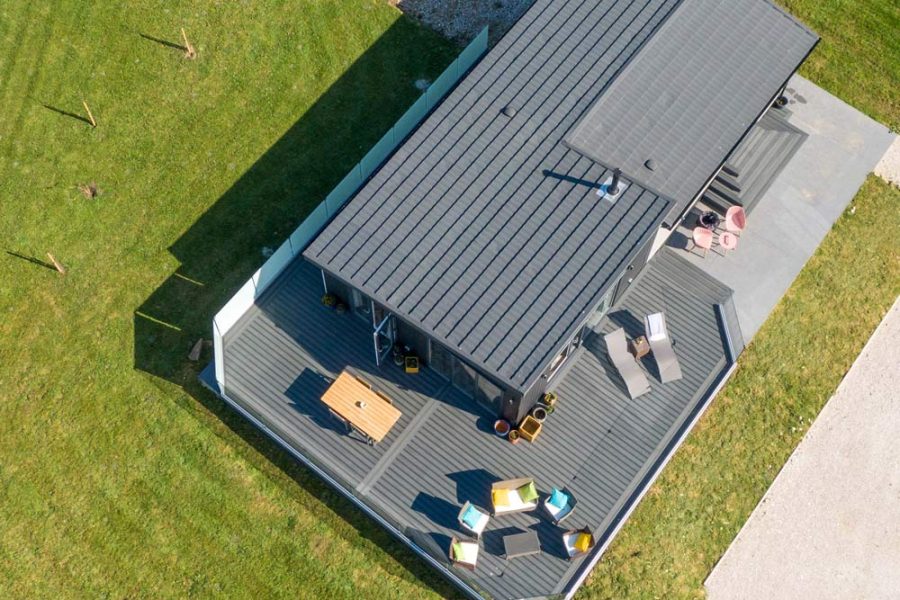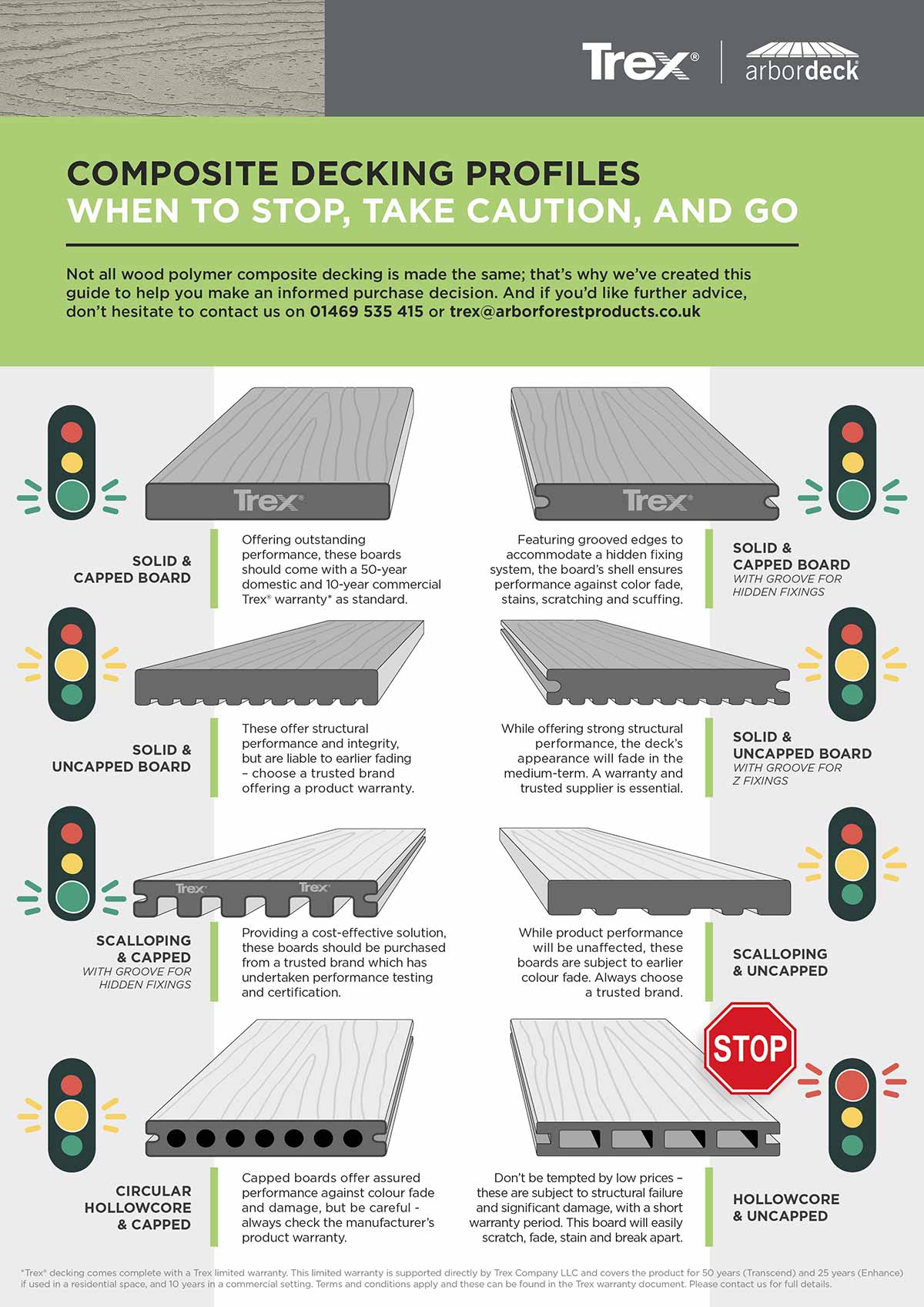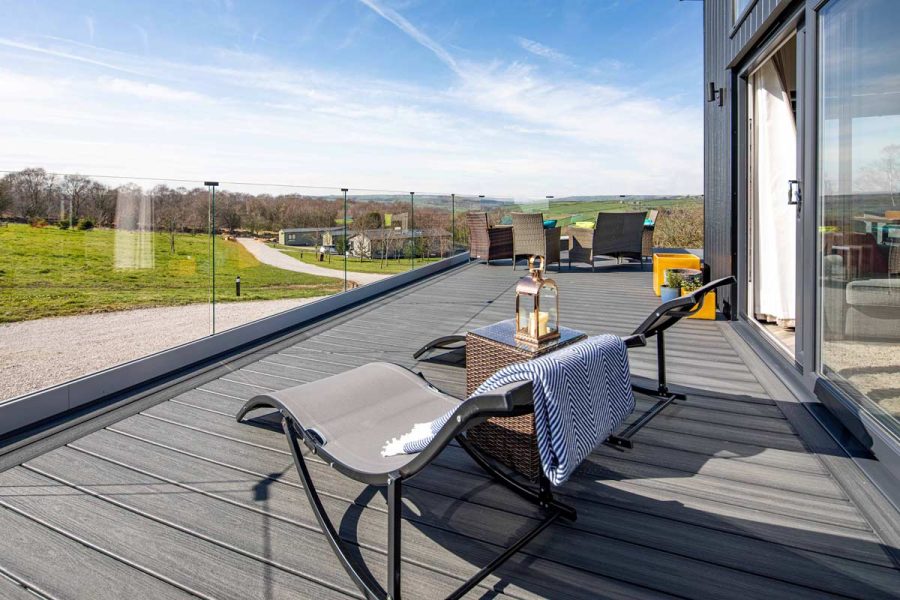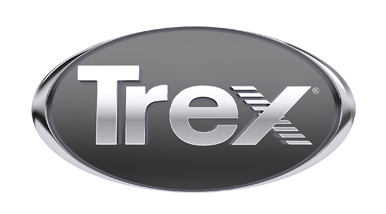Navigating the World of Composite Decking Profiles

With the surging popularity of composite decking in both residential and commercial applications, the market is inundated with new products. However, this influx sometimes brings a trade-off between variety and quality, as some manufacturers cater to budget-conscious customers keen on composite decking. It is important to consider composite decking profiles.
As more composite products saturate the market, here’s a guide to composite decking profiles – what you should look for, and what to avoid.
Top image: Deck installed by Heritage Decking

Solid and capped boards
When it comes to composite decking, solid and capped boards are the gold standard. While they may come with a higher initial cost, they offer unmatched long-term value.
Leading brands like Trex highly recommend these boards, as they deliver top-tier performance, defending against color fading, stains, scratches, and other damage, all with minimal maintenance. The solid core ensures structural integrity, and the “capped” aspect refers to an added protective outer shell. As a result, these boards typically come with manufacturer warranties lasting at least 25 years, and even up to 50 years for residential decks, and 10 years for commercial decks.
This type of composite decking board can come with or without grooves on both sides, designed to accommodate hidden fixings for a sleek overall finish.
Solid and uncapped boards
Solid and uncapped composite deck boards, available with or without grooves for fixings, also offer advantages, particularly in terms of structural performance and integrity due to their solid core.
However, they lack the protective outer layer, which makes them more susceptible to color fading and other signs of wear and tear. This can affect the overall appearance of the deck in the medium term, so when opting for this board type, it’s crucial to choose trusted brands offering manufacturer warranties for peace of mind.
Scalloped boards
The Trex Enhance Basics range includes scalloped boards, featuring a solid core with only one usable side. When capped, these boards provide structural integrity and fade resistance at a more budget-friendly price point, making them a popular choice for cost-effective composite decking.
Uncapped scalloped boards also offer good performance, but they may experience earlier color fading. To mitigate this, make sure to purchase from reputable brands that have undergone performance testing and certification.

Deck installed by Heritage Decking
Hollowcore boards
Hollowcore boards may present a more budget-friendly solution, as they are lighter and easier to install compared to solid core boards. However, specifiers should exercise caution when selecting boards with a hollow core.
These boards do not offer the same level of strength as solid core boards, making them unsuitable for commercial decks with heavy foot traffic. Nevertheless, when capped and sourced from reputable brands with a manufacturer’s warranty, hollowcore boards can provide a cost-effective solution for residential decks with lower traffic.
It’s imperative to steer clear of decks with a hollow core that remains uncapped. While the attractive price point may be tempting, these boards are prone to structural failures and significant damage, including scratches, stains, and color fading. This short lifespan could result in the need for a deck replacement in the near future, rendering the initial cost too good to be true.
In light of these considerations, it’s essential to weigh the cost-benefit analysis for each type of composite decking board on a project-specific basis, considering factors like application and budget. Opting for a reputable supplier like Trex with a comprehensive warranty ensures added protection and peace of mind.






